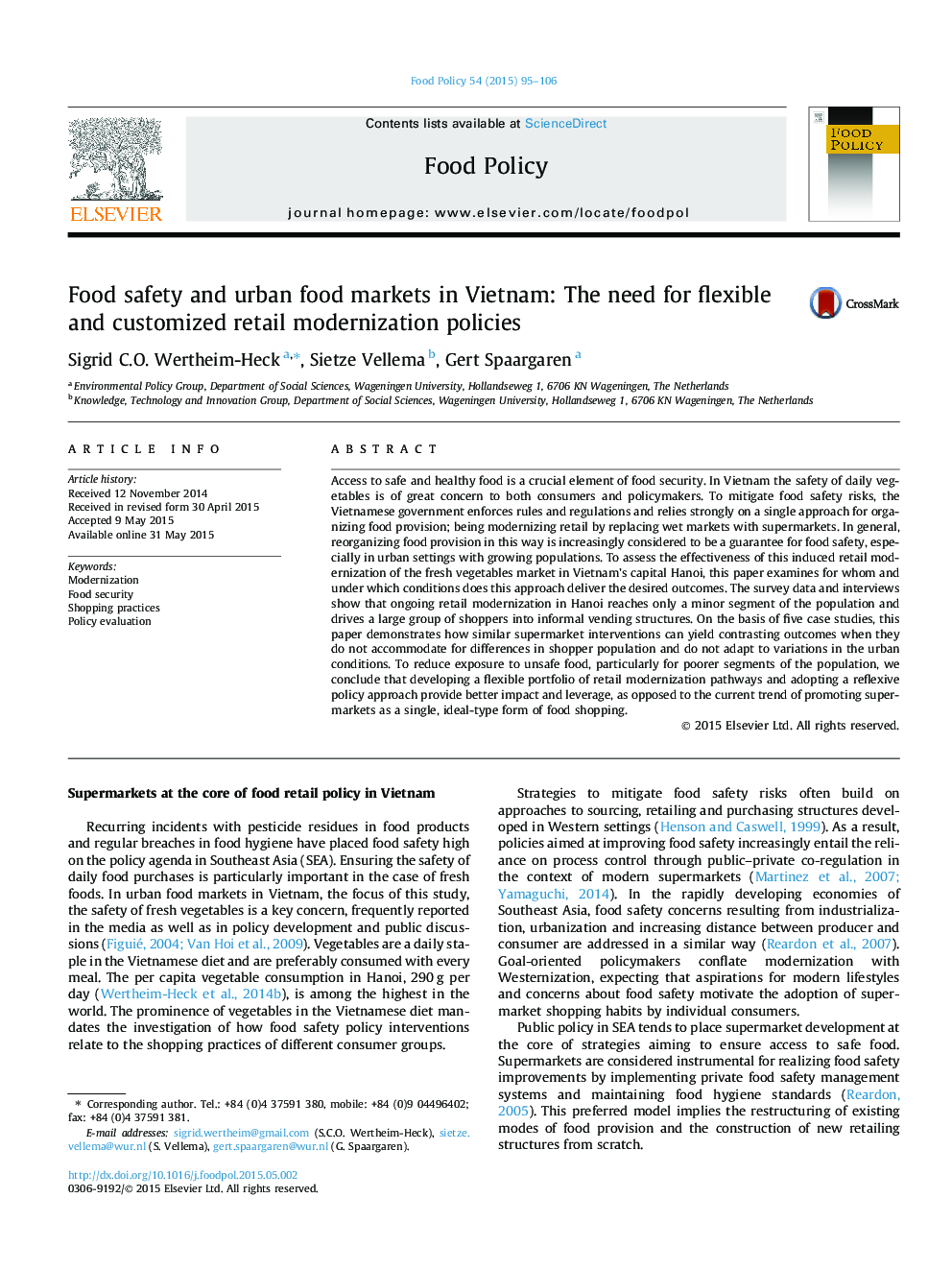| Article ID | Journal | Published Year | Pages | File Type |
|---|---|---|---|---|
| 5070304 | Food Policy | 2015 | 12 Pages |
â¢We applied a practice-oriented realist approach to retail modernization in Vietnam.â¢Ideal typical supermarketization excludes large groups in the population.â¢Case studies of interventions demonstrate how policy effectuation is conditional.â¢Social inclusion requires a varied portfolio of malleable policies.â¢Understanding 'real world' mechanisms informs more flexible policy creation.
Access to safe and healthy food is a crucial element of food security. In Vietnam the safety of daily vegetables is of great concern to both consumers and policymakers. To mitigate food safety risks, the Vietnamese government enforces rules and regulations and relies strongly on a single approach for organizing food provision; being modernizing retail by replacing wet markets with supermarkets. In general, reorganizing food provision in this way is increasingly considered to be a guarantee for food safety, especially in urban settings with growing populations. To assess the effectiveness of this induced retail modernization of the fresh vegetables market in Vietnam's capital Hanoi, this paper examines for whom and under which conditions does this approach deliver the desired outcomes. The survey data and interviews show that ongoing retail modernization in Hanoi reaches only a minor segment of the population and drives a large group of shoppers into informal vending structures. On the basis of five case studies, this paper demonstrates how similar supermarket interventions can yield contrasting outcomes when they do not accommodate for differences in shopper population and do not adapt to variations in the urban conditions. To reduce exposure to unsafe food, particularly for poorer segments of the population, we conclude that developing a flexible portfolio of retail modernization pathways and adopting a reflexive policy approach provide better impact and leverage, as opposed to the current trend of promoting supermarkets as a single, ideal-type form of food shopping.
